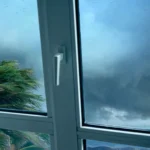Plumbing systems are the unsung heroes of our homes. They ensure clean water flows in and wastewater flows out. Regular maintenance prevents costly repairs and keeps everything running smoothly. A well-maintained system adds comfort and value to your home. This article provides a detailed plumbing maintenance checklist to help you stay on top of it all.
Why Plumbing Maintenance Matters
Ignoring plumbing issues can lead to water damage, mold growth, and high repair costs. Regular maintenance prevents minor problems from becoming major headaches. A consistent plumbing maintenance checklist ensures longevity for your system and saves money in the long run.
Essential Tools for Plumbing Maintenance
Before diving into the tasks, it’s essential to have the right tools. Here’s a list of basic plumbing tools every homeowner should have:
- Plunger: For clearing blockages in toilets and drains.
- Pipe wrench: Ideal for tightening or loosening pipes.
- Plumbing tape: Helps prevent leaks in threaded pipe connections.
- Bucket and rags: To clean up spills or leaks.
- Adjustable wrench: For general tightening needs.
- Flashlight: To inspect dark areas under sinks or in basements.
Having these tools handy will make your plumbing maintenance checklist easier to tackle.
Monthly Plumbing Maintenance Tasks
Inspect Faucets and Showerheads
Check for leaks or drips. Even small leaks can waste gallons of water and increase your bill.
Clean Drains
Remove hair and debris from shower drains to prevent clogs. Use a drain cleaner or a mixture of baking soda and vinegar for added effectiveness.
Check for Water Stains
Inspect ceilings and walls for discoloration, which could indicate a hidden leak.
Test Water Pressure
Ensure water pressure is consistent. High pressure can damage pipes, while low pressure might indicate a blockage.
Quarterly Plumbing Maintenance Tasks
Examine Exposed Pipes
Look for signs of corrosion, rust, or leaks. Address any issues immediately to avoid further damage.
Flush Out Sediments from Water Heater
Sediment buildup reduces efficiency. Flush your water heater every three months to improve performance.
Inspect Outdoor Faucets and Hoses
Ensure they’re free of leaks, especially after winter when pipes are prone to freezing.
Test Shut-Off Valves
Operate all shut-off valves to ensure they’re functional. Replace any that are stuck or corroded.
Annual Plumbing Maintenance Checklist
Check for Hidden Leaks
Inspect your home thoroughly for leaks, especially in areas like basements or crawl spaces.
Inspect Sewer Lines
If you’ve noticed slow drainage or backups, have your sewer lines professionally inspected.
Professional Water Heater Inspection
Hire a professional to ensure your water heater operates efficiently and safely.
Inspect Gutters and Downspouts
Clear out debris to ensure proper drainage. This prevents water from backing up and causing damage.
Signs You Need a Professional Plumber
- Persistent low water pressure
- Unexplained spikes in water bills
- Sewage odors in your home
- Recurring clogs
- Visible mold or mildew near plumbing fixtures
If you encounter these issues, it’s best to call an expert.
How to Check for Leaks
Inspect Fixtures
Examine sinks, tubs, and toilets for visible leaks. Place a few drops of food coloring in your toilet tank; if color appears in the bowl, there’s a leak.
Check Your Water Meter
Turn off all water in your home and monitor the meter. If it continues to run, you’ve got a leak.
Keeping Drains Clog-Free
Prevention is key to avoiding clogs. Use drain strainers to catch debris and avoid pouring grease down the drain. Regularly flush drains with hot water to keep them clear.
Inspecting Water Heaters
Water heaters need regular maintenance to function efficiently. Check the pressure relief valve, flush out sediments, and inspect for leaks. Replace if the unit is over 10 years old and inefficient.
Maintaining Toilets and Faucets
Fix running toilets promptly to avoid water waste. Replace worn-out flappers or seals. For faucets, replace damaged washers or cartridges to stop drips.
Winter Plumbing Maintenance Tips
- Insulate exposed pipes to prevent freezing.
- Keep a trickle of water running during extreme cold.
- Disconnect outdoor hoses and shut off exterior faucets.
Summer Plumbing Maintenance Tips
- Check sprinklers for leaks.
- Inspect your septic tank for issues.
- Monitor water usage to spot potential leaks.
DIY Plumbing Repairs: What You Can Do
Some plumbing issues are easy to fix. Replace washers in leaky faucets, unclog minor blockages, or tighten loose fittings. However, know your limits and don’t hesitate to call a professional.
When to Call the Experts
For major issues like burst pipes, sewer backups, or water heater failures, it’s best to hire a licensed plumber. They have the expertise and tools to handle complex problems.
Conclusion
A comprehensive plumbing maintenance checklist keeps your home’s system running smoothly. Regular inspections and minor repairs prevent expensive fixes down the line. Follow this guide to maintain your plumbing, save money, and enjoy peace of mind.

Robert Muller writes about home improvement at Floarena. He studied Home Remodeling and Repair. He has 15 years of experience. His blog posts are easy to understand. Robert loves his work and is trusted in his field.






